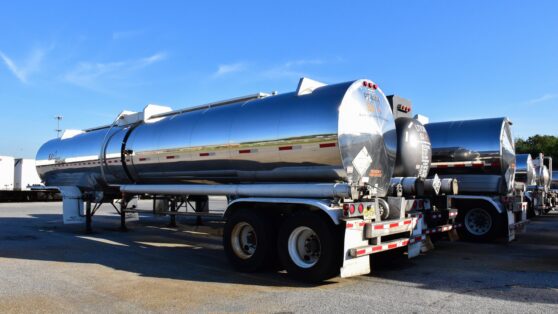Congress and the U.S. DOT have been toying with the possibility of raising the minimum amount of liability insurance required of motor carriers for nearly a decade, with efforts so far falling short of enactment.
But with infrastructure negotiations ongoing in Congress this session, raising the federal coverage minimum has been revived — and the U.S. House has already passed a bill calling for a new $2 million minimum. The Senate has been more reluctant to include such a policy rider in its bill, which passed in early October. Now, all eyes are on the chambers’ reconciliation process, which will determine whether a trucking insurance change ultimately makes the cut.
With the insurance market already squeezing motor carriers, and with premiums already accelerating in recent years, an overhaul of federal insurance laws could tilt the market even further and add even more upward pressure on carriers’ liability rates.
The American Transportation Research Institute estimated in a study released in 2020 that insurance premiums for motor carriers have climbed between 35 and 40% over the past five years for low- to average-risk carriers. One carrier in ATRI’s study said their premiums rose more than 100% over a single year.
The brewing changes by Congress make building and maintaining a culture of fleet safety and responsibility as imperative as ever. Video telematics tools like Netradyne’s Driveri are a vital arrow in a fleet’s quiver to help them manage insurance costs, fleet safety, and driver relationships.
Netradyne’s Driveri video monitoring platform provides fleets necessary visibility into drivers’ behaviors so they can properly coach them and work to mitigate crashes — and crash claims. Video telematics tools like Driveri also provide carriers with valuable video evidence to support their drivers when crash claims do arise.
Lastly, insurers know the value of video telematics systems, particularly Netradyne Driveri, which goes beyond simple dashcam recordings and offers a robust coaching and monitoring platform. Thus, insurers often will work to find better premiums for carriers who deploy the right technology.
Where did it come from? Where does it go?
The current $750,000 minimum was set in 1980 as part of the Motor Carrier Act (often referred to as deregulation), and proponents of raising that limit argue inflation, particularly medical claims, have limited its ability to properly cover crash claims. Opponents of an increase, however, argue that claims in large truck crashes rarely reach the $750,000 mark and thus an increase isn’t needed.
The House’s infrastructure funding proposal, which passed the chamber in late July, includes a policy rider that would push the current $750,000 liability coverage minimum to $2 million.
That’s twice the $1 million minimum the U.S. DOT’s Federal Motor Carrier Safety Administration proposed in a federal rulemaking ongoing between 2014 and 2017. That rule was ultimately scrapped in the transition between the Obama and Trump administrations.
But whether it’s through the current infrastructure bill negotiations or another process, such as an FMCSA rule, it’s an issue that should be on every fleet’s radar.
Any jump in the federal liability minimum won’t happen overnight. If Congress passes a finalized infrastructure package and the president signs it into law, it will likely stipulate a date of 18 months or longer for FMCSA to enact the new limit.
Once finalized by FMCSA via a federal rule, the limit would then take effect. But in the meantime, carriers and insurers will likely start taking the steps toward increasing their coverage ahead of the deadline should Congress include the change in its infrastructure funding package.
Those months or years between Congressional passage and FMCSA’s work to enact the new limit is also the perfect window for fleets to start adopting and implementing tools like Driveri.
Whether it’s this Congressional session or next — the issue isn’t going away. It’s a perennial consideration by Congress and the DOT, and it likely will be until some action is taken, even if it’s a smaller increase than the $2 million minimum offered by the current U.S. House.
Final Thoughts
The fleet insurance landscape for motor carriers can be brutal. Many trucking companies, especially smaller carriers, say premiums make it nearly too expensive to operate, let alone to try to grow and prosper. But there are opportunities within motor carriers’ reach to manage safety, mitigate crash claims, and keep insurance costs from climbing out of control — even amid a federal overhaul of trucking insurance laws. Netradyne’s Driveri video telematics system can be a vital tool in achieving those goals.
To learn more about this issue and about how Netradyne’s Driveri platform can help your fleet manage insurance costs, check out what Netradyne has to offer.







